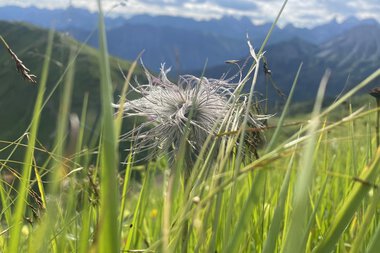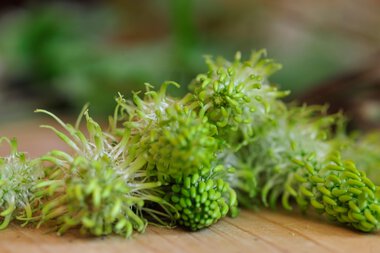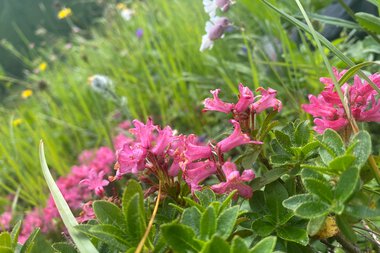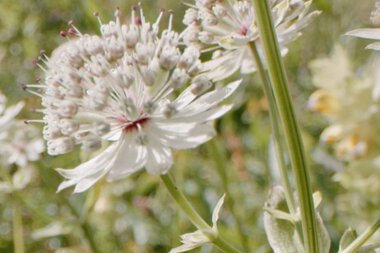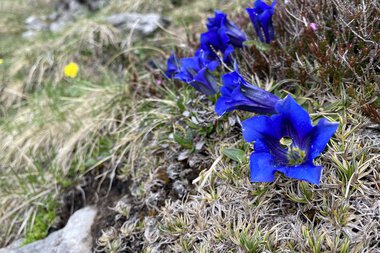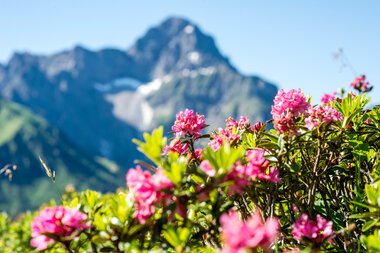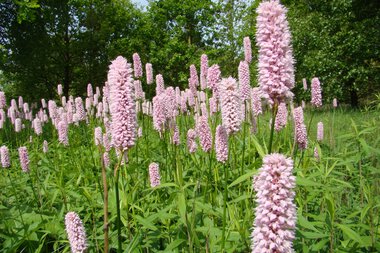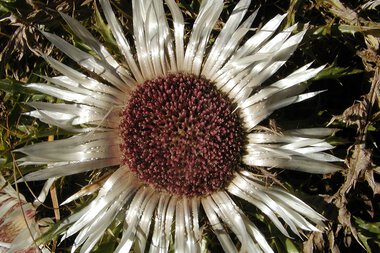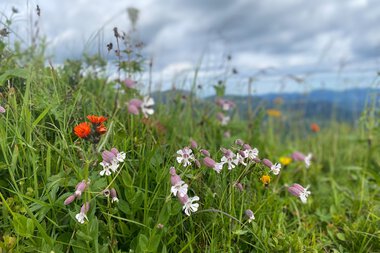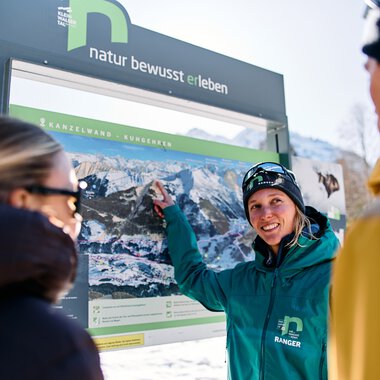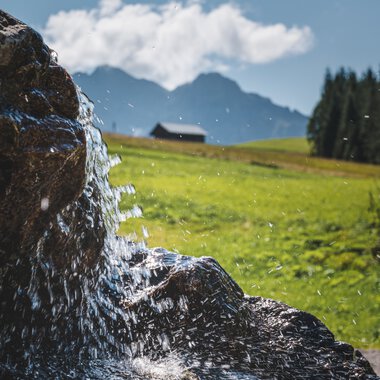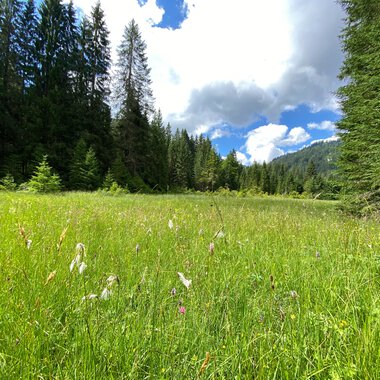Flower encyclopedia - Native plants
11.05.2022
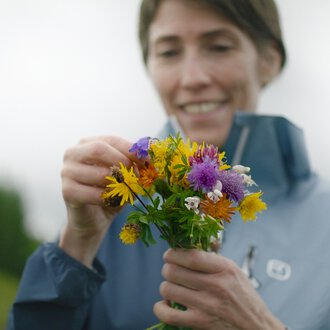
When I plan a hike, I look for the nearest peak, check the weather beforehand and familiarize myself with the conditions of the tour. As I've just moved here, I don't yet know all the mountain peaks in Kleinwalsertal by name. That's why I try to memorize the name and appearance of my destination before every tour. Also, of course, to impress friends and acquaintances a little when they visit me in Kleinwalsertal.
With the “Experience nature consciously” project, however, I realized that I have not yet actively engaged with the flora and fauna that surrounds me here. Sure, I follow the rules for a conscious and respectful approach to nature in order to protect animals and plants. But which animals and plants are these anyway? I want to be more aware of my surroundings on hikes in the future and am already trying hard to learn. Do you feel the same way? Below I have put together some basics of the Walser flora for you. The alpine flower trail on the Walmendingerhorn is also highly recommended for a first insight into the alpine flora. Or how about taking a walk with our experts?
Finally, it is important to emphasize that many of the plant species in the Walser nature are protected - please don't just pick them. With suitable apps or a plant diary in which you stick pictures, you can admire the colorful flowers long after your vacation is over.
Alpine pasque flower (Pulsatilla alpine)
- Family: Ranunculaceae
- Flowering time: May - July
- Characteristics: perennial, herbaceous plant; the leaves only appear after flowering; six oval, white corolla leaves
- Habitat: lean pastures, stony grassland with calcareous subsoil; altitudes of 1,200 - 2,700 m
- Special features: in the inflorescence, pistils elongate to 5 cm and give a hair-like appearance (“Wilds Männle” in Kleinwalsertal)
- Endangerment: specially protected
alpine Spiked devil's claw (Phyteuma spicatum)
- Family: Bellflower family
- Flowering time: June - September
- Characteristics: five-petalled hermaphrodite flowers in 6-20 cm long cylindrical spikes; corolla petals fused; corolla greenish to yellowish white
- Habitat: fresh, loamy deciduous forest and tall herbaceous meadows; up to altitudes of 2,000 m
- Special features: the young leaves used to be eaten as wild vegetables (“forest spinach”); the root beets are also edible
Alpine rose (Rhododendron hirsutum)
- Family: Heather family
- Flowering time: June - August
- Characteristics: Shrub & leaves evergreen; flowers on twig ends in crowded clusters; crown bell-shaped and funnel-shaped, bright red; hairy inside
- Habitat: calcareous krummholz scrub and dwarf shrub heaths, limestone scree, rubble and stony slopes and sparse pine and mountain pine forests; altitudes from 600 - 2,000 m
- Special features: the leaf edge is clearly “ciliated” (bristly hairs)
Endangerment: protected, poisonous
large astrantia (Astrantia major)
Clusius-gEnian (Gentiana clusii)
- Family: Gentian family
- Flowering time: April - August
- Characteristics: Flowers solitary terminal, hermaphrodite, bell-shaped, whitish striped or clearly dark blue spotted inside, without olive green longitudinal stripes
- Habitat: lean and calcareous dry grassland or gravel; montane valley location up to altitudes of 2,800 m
Rusty-leaved alpine rose (Rhododendron ferrugineum)
- Family: Heather family
- Flowering time: June-August
- Characteristics: Shrub evergreen, strongly bushy growth; flowers in clusters; crown hairy on the inside, broad funnel-shaped, deep pink to bright red
- Habitat: fresh, mostly acidic coniferous forests, sparse scrub, dwarf shrub heaths and krummholz scrub; up to altitudes of around 2,100 m
- Special features: the underside of older leaves is covered with rusty-brown glandular scales
- Endangerment: Regionally endangered (-r), poisonous
Snake knotweed (Polygonum bistorta)
black cabbage (Nigritella nigra)
- Family: Orchidaceae
- Flowering time: June - August
- Characteristics: dense, spherical inflorescence with small black-purple, funnel-shaped flowers with upward-pointing lip
- Habitat: lean, dry mountain and alpine meadows, alpine pastures
- Special features: has a pleasant vanilla or chocolate scent
- Endangerment: widespread in the Alps, but still endangered
Silver thistle (Carlina acaulis)
- Family: Asteraceae
- Flowering time: July - September
- Characteristics: Flower heads ∅ 5-11 cm, with several hundred whitish to reddish tubular flowers, bracts silvery-white on the upper side
- Habitat: summer-warm, mostly grazed nutrient-poor grassland on base-rich soils with a low humus layer, especially in limestone areas with low rainfall; up to altitudes of 2,800 m
- Special features: an angel is said to have shown Charlemagne the silver thistle in a dream as a cure for the plague
Pigeonweed (Silene vulgaris)
- Family: Carnation family
- Flowering time: May-September
Characteristics: white, light pink sepals with 5 petals; calyx tube inflated - Habitat: dry, alternately moist, non-acidic and low-nitrogen, calcareous soils; rarely on cultivated land; up to altitudes of over 2,000 m
- Special features: young shoots can be picked before flowering and used like vegetables or added raw to a salad; in the past, the roots were used to boil soapsuds

